July 7, 2025, 10:55 am | Read time: 4 minutes
When it comes to decorating the walls in a child’s room, many ideas have been popular for decades, but they’ve also become somewhat overused—perhaps too much so. myHOMEBOOK believes it’s time for fresh ideas.
The birth of a child is imminent–or the old nursery needs a new look. The only question left is, in what style? Honestly, when it comes to wall design for the nursery, it feels like we’ve seen it all. Rigid stripes, smiling flowers, or fire-breathing dragons have been popular wall motifs for years. Currently, numerous new and original ideas for nursery wall design are emerging.
Natural Landscapes Bring Calm
Until now, nature motifs have only made it into nurseries in a highly stylized, childlike form. A smiling meadow, a brightly colored jungle, or roaring waves with jumping dolphins were common motifs for a long time. Nowadays, the choice of motifs–such as a mountain panorama–appears much more realistic. Rendered in soft colors and clearly abstracted, they are playfully translated into the child’s world.
Also interesting: 6 current trends in wall art that bring variety to the home
Colorful Dots as Nursery Wall Design
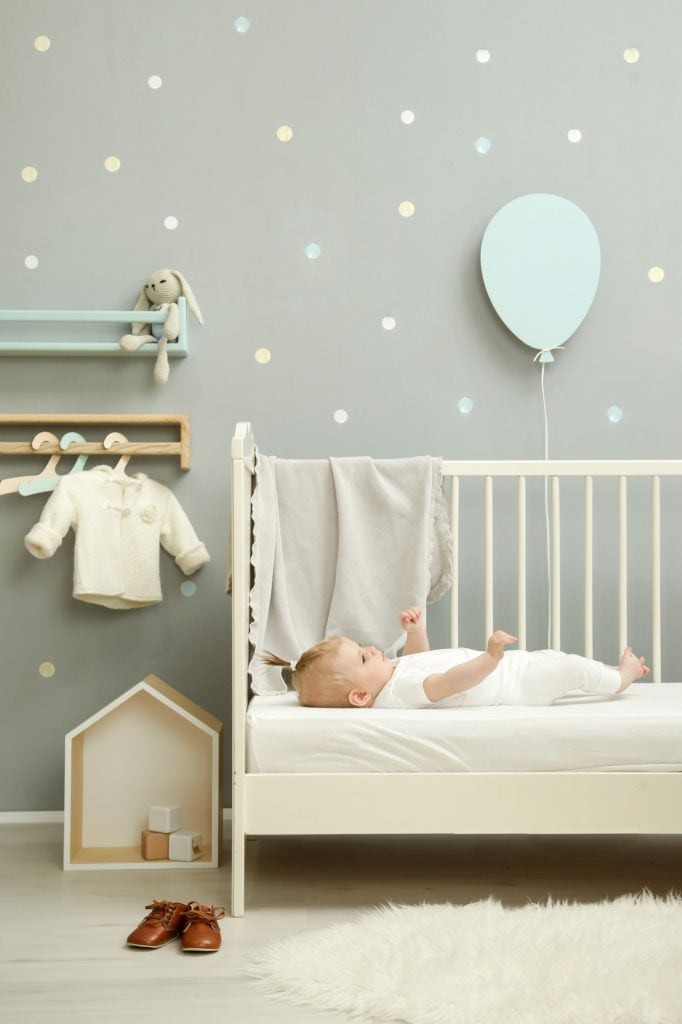
While dots have been a common motif for nursery wall design for some time, often only a single color is chosen. However, using dots in multiple colors can create significantly more facets. Ideally, about three to four different shades are used. If you prefer a more colorful look for your child, you can choose even more generously. Additionally, the design gains a casual feel when freehand dots are used instead of perfectly shaped ones.
Fantasy and Mythical Creatures
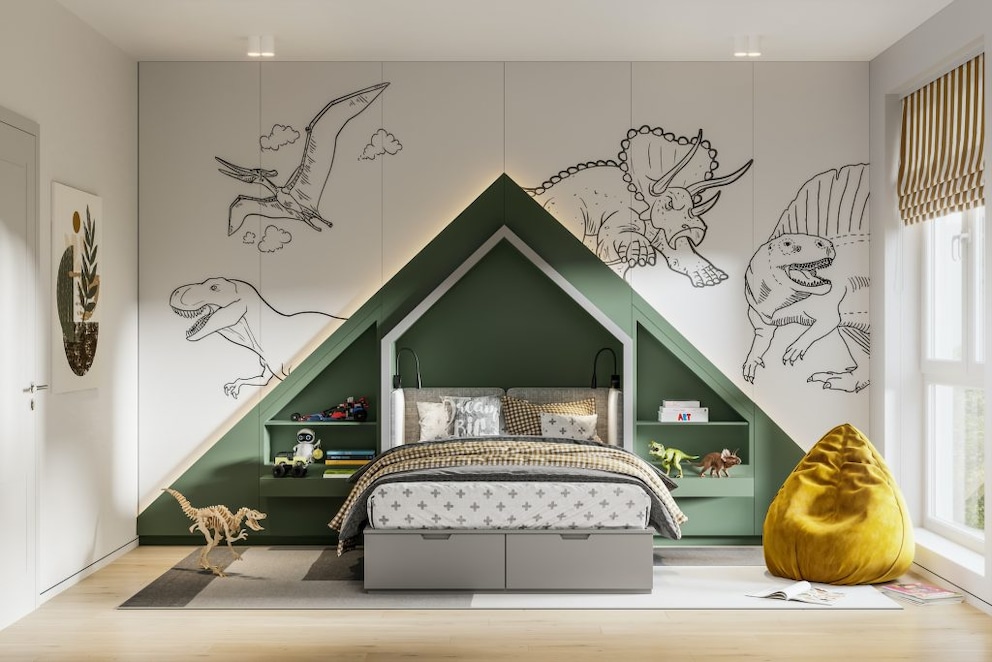
The Lion King, Bambi, or Nemo–so far, well-known animal characters from animated films have often served as inspiration for nursery wall design. These looks are also outdated and often seen. Why not create a child’s fantasy world with stencils featuring dinosaurs, dwarves, forest spirits, dragons, or unicorns? To ensure the little ones aren’t frightened, these creatures don’t have to be scary but can appear cheerful. It’s advisable to place the new “roommates” on only one or at most two walls in the room, keeping the remaining wall surfaces neutral.
Also interesting: Which wallpaper pattern is suitable for which room?
A Clear Nursery Wall Design
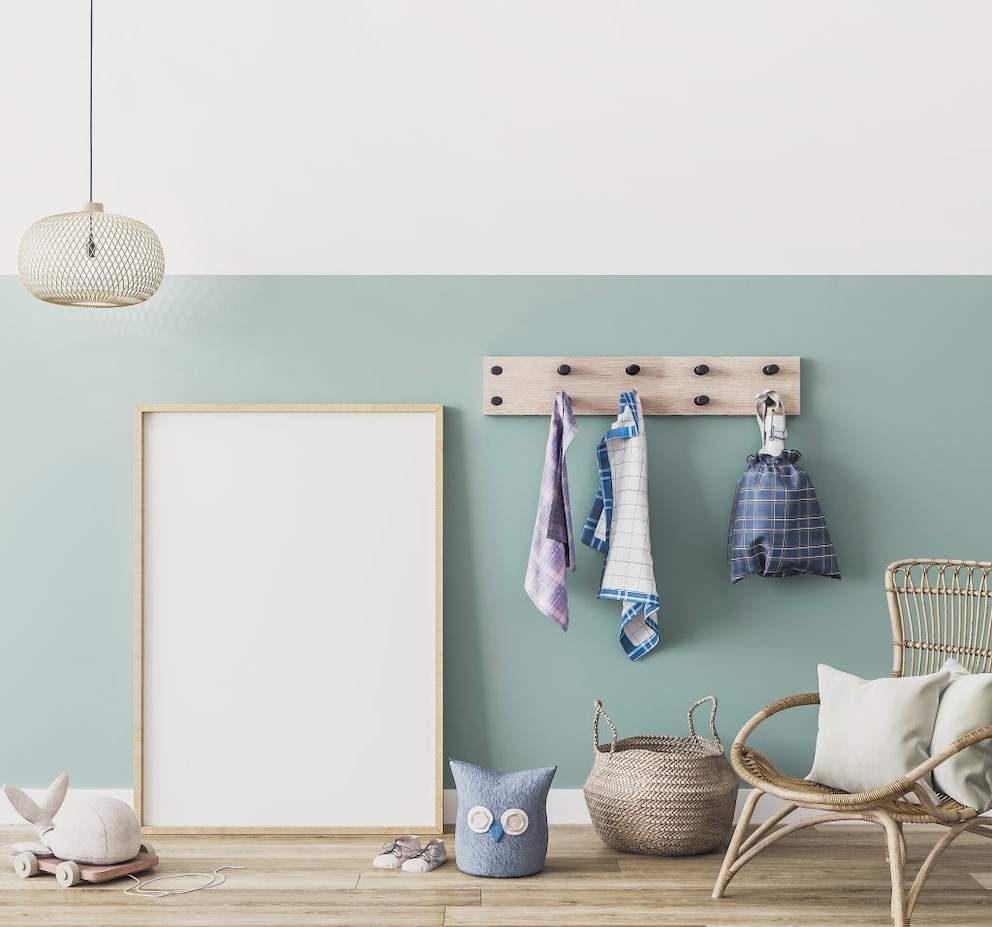
If the preferred look is clear, minimalist, and timeless, it’s advisable to forgo childlike motifs and instead opt for a monochrome wall design in the nursery. To still align the look with the child’s world, especially their perspective, a half-painted wall is a fitting idea. Most of the things the child sees and uses daily are on the colored section of the wall. Ideally, the upper half remains in a simple, neutral tone like cream, light gray, or just white.
Also interesting: How to paint walls in a watercolor look
Reinterpreting Old Weather Motifs
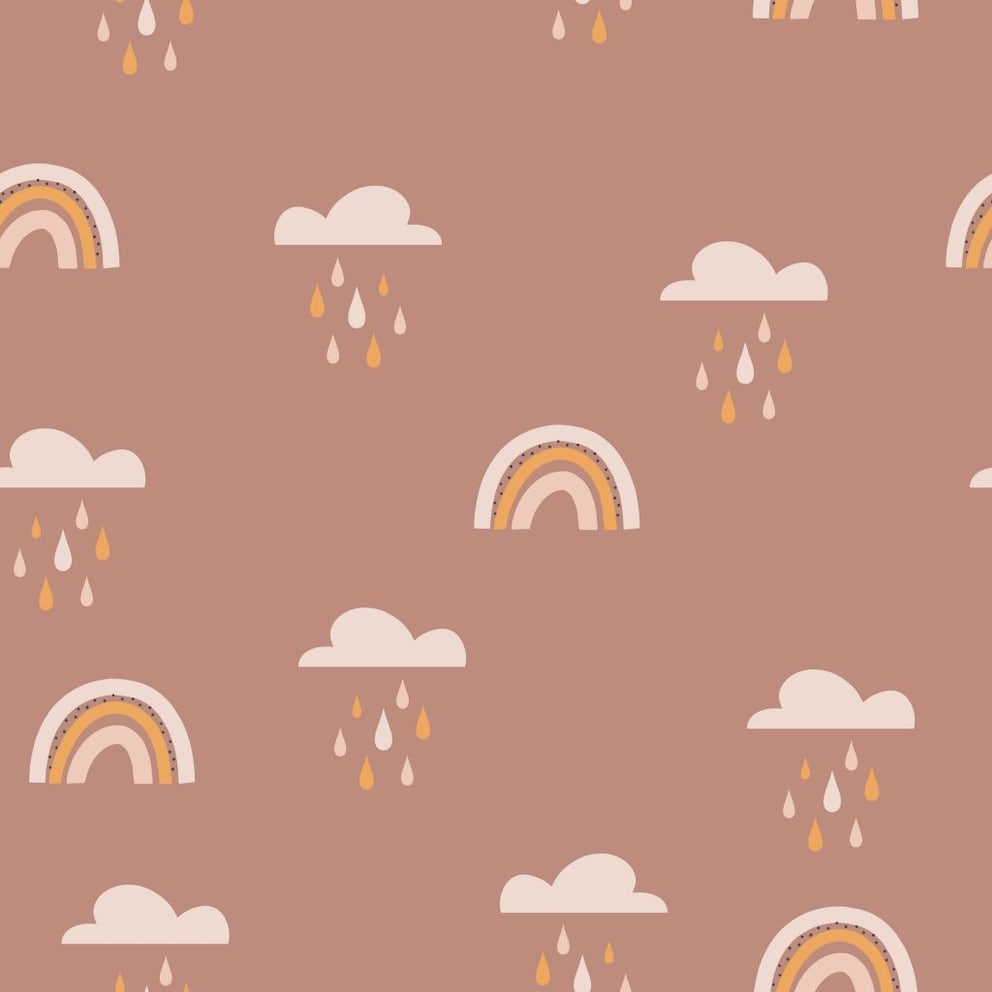
Weather motifs have also been popular for many years in nursery wall design. Their advantage: They are neutral and thus a good choice if the gender is unknown until birth or if an older child isn’t interested in princesses or castles. However, the depiction of these weather motifs has often been similar: smiling suns, dreaming clouds, or colorful rainbows. Why not present a different facet of these motifs and opt for a differently colored rainbow or a rain cloud? If the colors are warm and cheerful, these motifs appear far less dreary than expected.

These 5 Styles Are No Longer Popular in Kids’ Rooms

Setting Up a Montessori-Inspired Children’s Room

Scandinavian Bedroom Design: 6 Tips for Nordic Coziness
Graphic Patterns in a Purist Style
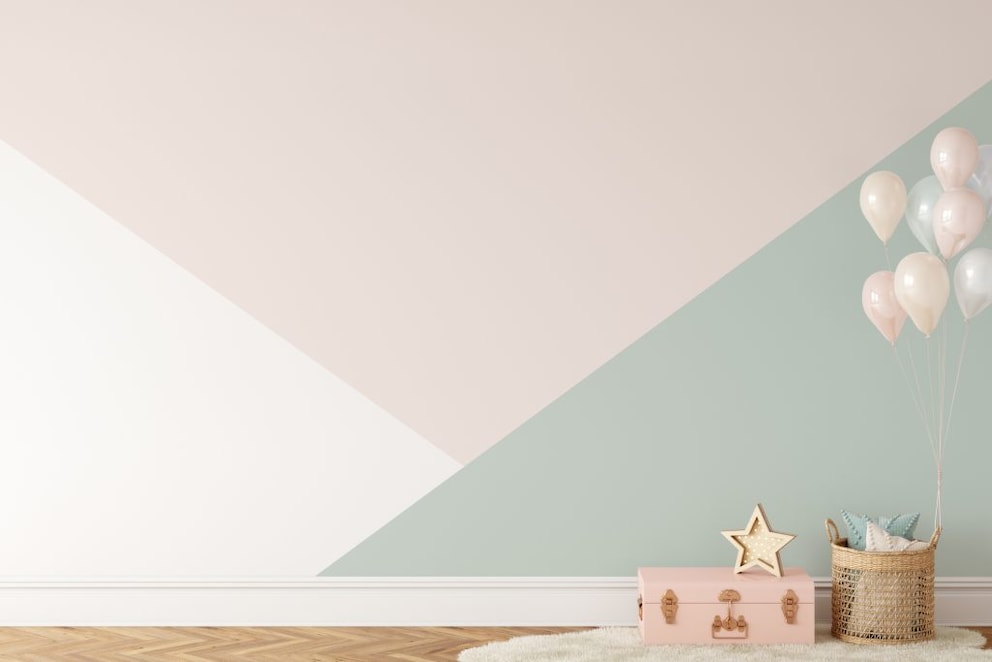
There are also new alternative ideas for popular graphic patterns like stripes, waves, or zigzag lines. It can still be simple, but such a design no longer has to run linearly along the wall. How about a purist graphic pattern in a full-surface style? Simply divide the wall surface into three to four larger sections–for example, in the form of different triangles–and a unique look is created! For the final childlike touch of this wall design, it’s best to choose different soft pastel tones or the child’s favorite colors.

